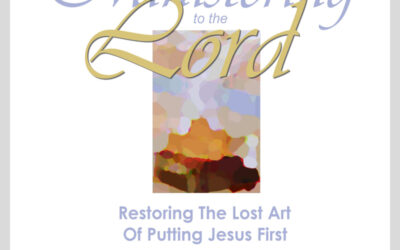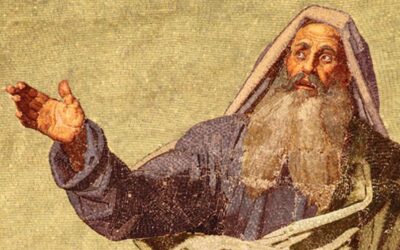If we look in the New Testament we see a natural order and progression of things. Matthew, Mark, Luke, and John discuss the earthly ministry of Jesus Christ. From here we move on to Acts, where we find the birth of the Church and the continuation of the Good News in the early saints. Then we move on through the letters to the Romans, Corinthians, Galatians, Ephesians, Philippians, Colossians, Thessalonians, Timothy, Titus, Philemon, Hebrews, James, and 1 Peter. The majority of these letters were written to address particular problems or issues as they arose within the individual churches, but they lay the foundation for things pertaining to Christ, the Church, and doctrine.
If we are careful and studious we will notice a shift beginning with II Peter. II Peter, the epistles of John, and the epistle of Jude were written much later, after the Church had been inundated with false brethren, false teachers, false prophets, false apostles, and false doctrines. Peter wrote his second epistle after his first epistle was rejected. John sums every false and heretical thing up into this one spirit he calls “Antichrist”. Even Jude expresses a desire to write about the common salvation, but is then prompted to write instead concerning false prophets.
The books of the New Testament are not arranged in strict chronological order. Nevertheless, they are arranged in a particular order. First, that which concerns the ministry of Christ; second, the record of the birth and acts of the early Church; third, the teachings and doctrines of the Church; and fourth, the warnings against false prophets and teachers, who by now have gained some ground. If we stopped at this point, with Jude, we might conclude that things are being left undone. There is much which goes unanswered.
So the last book in the New Testament is the Book of Revelation, and this book very appropriately records God’s response to the current situation of heresy in the Church by calling forth Overcomers. But it goes beyond to show us the ultimate outcome of God’s dealings with the Church, with the world, and with satan. It truly brings everything together into one and consummates everything.
But what about the man who was responsible for these writings? What is the Lord teaching us about him?
The Gospel of John
John stands alone and apart. He did not write anything until he was the last one to write. Matthew, Mark, and Luke had already written their accounts of Christ. Each was written from a different perspective, but they essentially contain the same information.
Matthew emphasizes Christ as the Messiah and King, Mark introduces Him as the Suffering Servant, and Luke shows Him to be the Son of Man. Some of the same events and teachings are recorded in more than one of these Gospels, and some things are recorded in all three. There is some repetition and confirmation among them. All these years John wrote nothing. Perhaps he believed the record of Matthew, Mark, and Luke was sufficient. In any event, his time had not come.
As the Church increasingly came under the influence of Antichrist, both from within and from without, John wrote his Gospel long after the other three. If you read John’s Gospel you will find that it is harmonious with Matthew, Mark, and Luke, but it is also quite apart from them. There is a profoundness there that is not present in the others. We are not suggesting one Gospel is more inspired that the other, we simply say that the Gospel of John has a certain fragrance not found anywhere else. This is because it was written for a specific purpose during a specific time, and the circumstances surrounding its writing is different from the circumstances surrounding the writing of the other three.
If Matthew is describing Christ the King, and Mark is describing Christ the Suffering Servant, and Luke is describing Christ the Son of Man, then John is describing Christ the Son of God. John specifically says his Gospel was written that we may know that Jesus is the Son of God and that we may have Life through His Name (John 20:31).
It is interesting to note that the heavenly beasts John saw before the throne seem to represent the four gospels (Revelation 4:7). The first was like a lion, representing the King, or the Gospel of Matthew. The second was like a calf, or oxen, representing the Servant, for the oxen is a beast of burden. This represents the Gospel of Mark. The third has the face of a man, and this is representative of the Son of Man, the theme of the Gospel of Luke. The fourth is like a flying eagle, representing the Son of God, who is exalted and seated in the heavenly places where only the eagles may soar. This seems to characterize the Gospel of John. Perhaps John discerned the need for adding the fourth Gospel when he received this heavenly revelation.
What makes John’s Gospel unique, and why does he come forth near the end and provide it to the Church? First, it goes back further into history than the other Gospels. Because Matthew is demonstrating Christ as King and Messiah, he begins with Abraham and traces the line through King David. Mark is demonstrating the Suffering Servant who has no genealogy or line to speak of so he simply begins with John the Baptist and records no genealogy at all. Luke, desiring to show forth Christ as the Son of Man, rightly traces the ancestry of Jesus all the way back to Adam. “Son of Man” would be translated, “Bar-Adam”, the son of Adam, and since Christ is alternatively known as the Second Adam and the Last Adam, this is to be expected from Luke.
But John goes back even further: “In the beginning was the Word. The Word was with God, and the Word was God… the Word was made flesh and dwelt among us (John 1:1,2,14 ff).” Thus, John is presenting Christ as the preexistent and preeminent Son of God.
John’s Gospel is particularly unique because it deals with internal and eternal truths more so than external things. A few miracles are recorded insofar as they represent some overriding truth and revelation into the very essence of Christ. John wishes us to know the spiritual reality of things more that the outward particulars. He deals with principles, not just facts.
For instance, the raising of Lazarus from the dead is related in order to demonstrate that Christ is Resurrection and Life to all who believe into Him. It is included not just to show that Christ can raise the dead, but that He Himself is Resurrection and Life. In the healing of a man born blind, the miracle is included to demonstrate that Christ is the Light which is come into the world, Who is sent to make the blind see and to make the ones who think they see blind. John goes beyond the miracle of the bread and fish and provides us with a lengthy discourse which demonstrates the significance of the miracle: that Christ Himself is the Bread which came down from heaven. So all the miracles are presented in such a way to give us insight into the Person of Jesus Christ, and not just the miracles as something in and of themselves.
So we see in John’s gospel more than just the relating of facts and anecdotal evidences. Grand, eternal, invisible truths are presented. Even so, we note how simply and succinctly these truths are presented. Even a newborn Christian can read, understand, and benefit from John’s Gospel, and we usually suggest that new believers beginning a study of the New Testament start with this book first. It touches upon things pertaining to Life, Love, Light, Water, Bread, One Flock, One Shepherd, the Way, the Truth, and more. Yet we do not touch these “things”, we touch a Man. Hallelujah!
Moreover, John’s gospel is unique in that the majority of material presented is not found anywhere else. We have already mentioned how John goes all the way back to the beginning, to the preexistent Christ. This is exclusive to the Gospel of John. We also have the conversation with Nicodemus, the woman at the well, the woman caught in adultery, the resurrection of Lazarus, the detailed teaching of Vine and Branches, the work of the Comforter, and the restoration of Peter. These are but a few examples of material which is unique to the Gospel of John.
The Epistles of John
When we come to John’s epistles we find the same fragrance here as we do within his Gospel. If Paul is the teacher, the explainer, and the detailer, John is the one who summarizes everything Paul ever said about Christ into one place: “He that has the Son has Life, and He that has not the Son of God has not Life (I John 5:12).” It just cannot be expressed more plainly or simply. John never mentions anything about head covering or spiritual gifts or qualifications of an elder. Concerning husbands and wives, parents and children, masters and slaves, widows and orphans, he says nothing, but ties everything up into one succulent truth: “Love one another.”
All the details have been covered by Paul already. John’s work is not to set the Church in order, but to restore the Testimony of Jesus to the Church. If the Church does not bear the Testimony then the matters of head covering, tongues speaking, and eldership become moot points. In other words, if the Light goes out then it does not matter if everything else is done decently and in order. We will simply be having “church” in the dark. If the Testimony of Jesus is lost then the meeting together, the Lord’s Supper, the establishing of churches, the exercise of spiritual gifts, the ministry to the poor – all that pertains to the Church becomes meaningless and dead.
As a wise master builder, Paul is building upon the foundation of Christ and concerns himself with everything from the building materials to the color of the carpet to the fixtures on the wall. From Paul we learn all about this Church that Jesus is building. Once that is established, John comes to remind us why the building is built in the first place and Who the Owner is. In other words, John is calling us back to the revelation Testimony of Jesus in order to recover God’s original thought and purpose for the Church.
So in his first epistle John speaks with great liberty and sets forth the foundational truths in a way which sums everything up. As he nears the end of his life he sees the Church in a fallen position and endeavors to bring it back to an internal reality which transcends the outward structure. Of course he knows he is the last of the original twelve apostles. Peter, Paul, James, all of them have been killed. As John looked around at the condition of the Church it must have been a frightening thing to realize that he was the last of the Twelve and he was about to go, too.
But the Lord gives him an understanding, and moves upon John to tell us that the Anointing which abides in us will lead us into all truth, even if there are no apostles left to teach us. Even if the outward structure fails (as it most certainly has, and did), the inward reality will see us through. John’s words here are remarkably similar to the word of the Lord Jesus, who promised that even though He was leaving them, the Spirit would come and teach them everything. It is a though John senses the end is near and in one final act casts the care of the Church back upon the Spirit to look after his “little children”.
In the second epistle of John there does not seem to be as much liberty. The audience seems to have shrunk considerably, and the letter is much shorter. In his first epistle, he addresses everyone: fathers, young men, and little children. But now John rejoices that he “found [some] of thy children” were holding to the truth (II John 4). Some of the children remained in the Truth: obviously, some did not. The letter warns against Antichrist and pleads with them not to receive anyone who does not bring the doctrine of Christ. What is the doctrine of Christ? It is that which has been revealed thus far concerning Jesus as the Christ of God and the Sum of All Things.
In the third epistle of John there is even more trouble. For now the audience has been reduced to a single individual, Gaius, who alone abides in the Truth. Now we do not mean to suggest that everyone has left the faith but Gaius, but we are suggesting that the three epistles of John are arranged and written in a way that is representative of the decline of the Whole. John addresses everyone, then a few of the children, then one man. This is a decline. John is being shut up and shut out. For now we see that John himself is being rejected by Diotrephes. It is not merely the doctrine of Christ that is in dispute, but John himself is being called into question. Certainly some of the churches still received John, but then there are some who did not. The Church has come to a low place indeed, and we know that in at least one assembly, neither John nor his letters were allowed (III John 9).
At some point prior to the decease of John the epistle of Jude was written to put the Church into remembrance of certain things which they ought to know, but had forgotten. There is little praise to be found here, although it holds out the promise that Christ can keep them from falling and will preserve them. Jude has to remind them of the teachings of the apostles. Most scholars believe that at the time of this writing the original apostles had already been martyred, the elderly John being the one exception.
John and the Book of Revelation
So when the rest of the apostles had been martyred and the Church had fallen into a state of decline, John alone remained as the “last” apostle. God extended his years and kept him from martyrdom. Indeed, he is the only apostle to die a natural death. All the other apostles were executed. We ought to pay attention to that, because God is causing John to stand out from the other apostles. We see him in great contrast to the rest. What is God desiring us to see here?
The Lord wants us to see that John is an Overcomer. Though they boil him in oil, yet he has overcome death. Though they have exiled him to an island he overcomes, as this prepares him for his greatest contribution to the Church. Without the Book of Revelation neither the New Testament nor the entire Bible can be brought to a fitting conclusion. Without it we are left to wonder how God will deal with the problem of Antichrist in the world and apostasy in the Church. God preserved John that we may know the end of all things, and that we may know that there is a duty for us to fulfill and a role for us to play in the conclusion of all things.
Paul stressed the Revelation of Christ, whereas John stressed the Testimony of Jesus. Paul represents Revelation, and John represents Testimony. Let us compare the two and see how they are connected.
Revelation is from God to the Church, while Testimony is from the Church to the world.
Revelation is an inward work, whereas Testimony is an outward witness.
Revelation is the foundation upon which the Church is built, whereas the Testimony is the purpose for the building.
Revelation is knowing, Testimony is showing.
Revelation is the unveiling of Truth, Testimony is the proclamation of Truth.
Revelation is seeing, Testimony is speaking what we have seen.
So while Paul is primarily concerned with praying for all saints to come to the EPIGNOSIS (full-knowledge) of Christ, John is primarily concerned with calling forth those who are to walk in the EPIGNOSIS which they have received already. Paul is bringing forth mysteries in Christ which are now revealed and made manifest, while John is telling us to remember, know, and live according to the Truth which has already been revealed to us. Thus, we see that revelation is followed by testimony. We cannot testify to what we have seen and heard if we have not, in fact, seen or heard anything to begin with.
When the Church as a whole fails to maintain the Testimony of Jesus, God selects Overcomers, taking a few parts to represent the whole. God has had His Overcomers in every season and age of the Church. Because of their ministry and service, the Kingdom of God is advancing. It is not losing ground at all. We must understand that God never moves backward in relation to Christ, even when circumstances seem to indicate huge reversals and detours from God’s Ultimate Will. Since the foundation of the world He has moved steadily and patiently FORWARD.
In the end, at the time of greatest darkness, God reveals His Son as King of Kings and Lord of Lords, Alpha and Omega, First and Last, Beginning and End, The One Who Overcame. He selects seven individual churches to address and expresses His intention to carry out His Will and bring forth His Kingdom through Overcomers.
John’s ministry is that of releasing Overcomers. Where Peter casts the nets as a fisher of men to bring people into the Church, John is mending the nets after they have been torn (Mark 1:19).
John is typical of all Overcomers. Notice that his greatest contribution to the Church is in his old age and at a time of spiritual darkness. Although we know that he worked diligently among the churches of Asia Minor as a pastor, teacher, and elder, Scripture holds him in relative obscurity until the time of the end. Then, like a treasured vessel, after everything is broken down and falling apart, John is brought out of insignificance and is given the crucial work of restoring the Testimony to the Church, that the ultimate plan and purpose of God may be fulfilled. Since John is an Overcomer, God sends out the call for Overcomers through John. John is symbolic of all Overcomers, and he is the instrument through which God raises up Overcomers.
I can relate to John. I know many of us feel as if we are alone, in exile, in a wilderness. Gradually we feel we are being shut up and shut out by others who have not seen what we have seen. It is right THERE, in the desert place, in the place of exile, in the place of banishment, in the place of dryness, in the place of darkness, that Christ is revealed to us. This ought to encourage us no matter what our situation.
Every day I pray that the Lord will raise up Overcomers who will have the Revelation of Christ and will bear the Testimony of Jesus, who will demonstrate the preeminence of Christ over sin, self, and satan through “the blood of the Lamb, the word of their testimony, and the laying down of their lives” (Revelation 12:11). Will you be numbered with them? I pray the Lord will continue to use John to stir our hearts. Amen.












